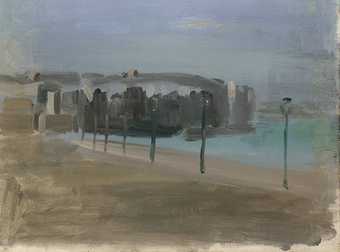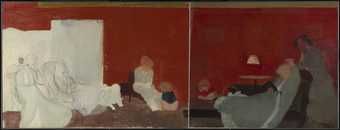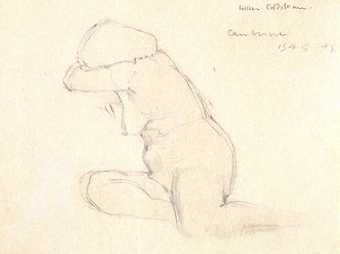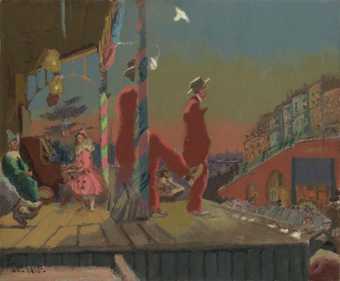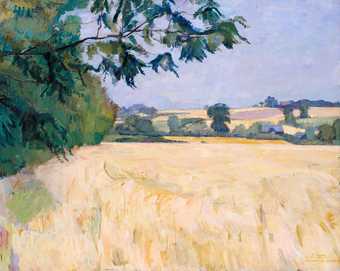Victor Pasmore (1900–1998) has a unique place in the history of twentieth century British art, for not only was he one of the most talented figurative painters of his generation, but he also became a leading practitioner and theorist of abstract art. During his long and fertile career Pasmore pursued many different lines of enquiry in his work. He moved from realism to abstraction, from traditional art practices to painted collage and construction. It was through these transformations that he began to change 'the process of painting', and the works in this display chart his progress, from the 1920s to the 1990s.
Despite showing exceptional artistic talent in his youth, Victor Pasmore did not take the conventional route through art school, but worked as a clerk at the London County Council, attending evening classes at the Central School of Art. A 'weekend painter with no academic training' he eased his way into the London art scene in the 1930s, showing with the London Group and the London Artists' Association. The artistic influences that shaped his early work reflect the spirit of the time. His admiration for the paintings of Turner inspired his earliest landscape paintings, whilst the work of the French Impressionists influenced the oil sketches of the countryside at Farleigh, and still lifes such as The Bradman Still Life 1926.
Pasmore briefly experimented with abstract painting in the mid-1930s but, frustrated by the results, he resolved to 'start again', keeping to a very objective form of representation. This led him to co-found the Euston Road School with fellow artists William Coldstream and Claude Rogers. The School emphasised working directly from nature, using a disciplined, objective approach; its prospectus stated that: 'particular emphasis will be laid on training the observation. No attempt, however, will be made to improvise a style'. Pasmore drew inspiration from W.R. Sickert's urban Impressionism, and Parisian Café 1936–7 exemplifies this.
In his life and work, Victor Pasmore changed direction a great many times. His appetite for new ideas and experiences was inexhaustible, and, as this display has demonstrated, he continued to explore different techniques in paint and print long after he first turned to abstraction. When he looked back on his career Pasmore said that he felt he had witnessed the 'revolution of Painting ... (when) the naturalist painter has been forced to start completely again'. Pasmore played a major part in this new beginning, and his work reflected and frequently anticipated the changes which occurred in art and art practice in the twentieth century. It is now irrefutable that Victor Pasmore has left an extremely rich legacy for British art. His work, in all its diversity, will remain challenging and relevant for future generations.

